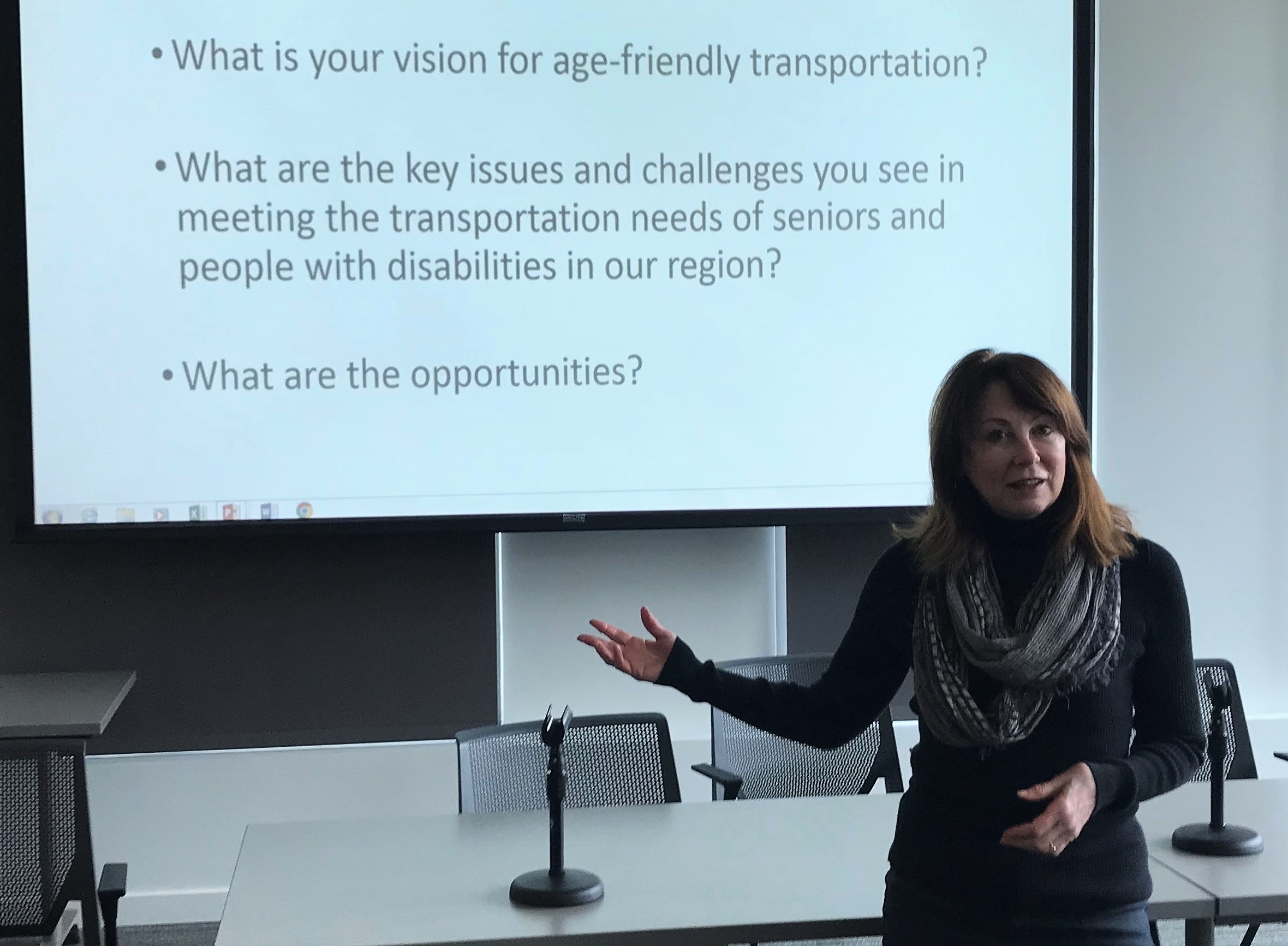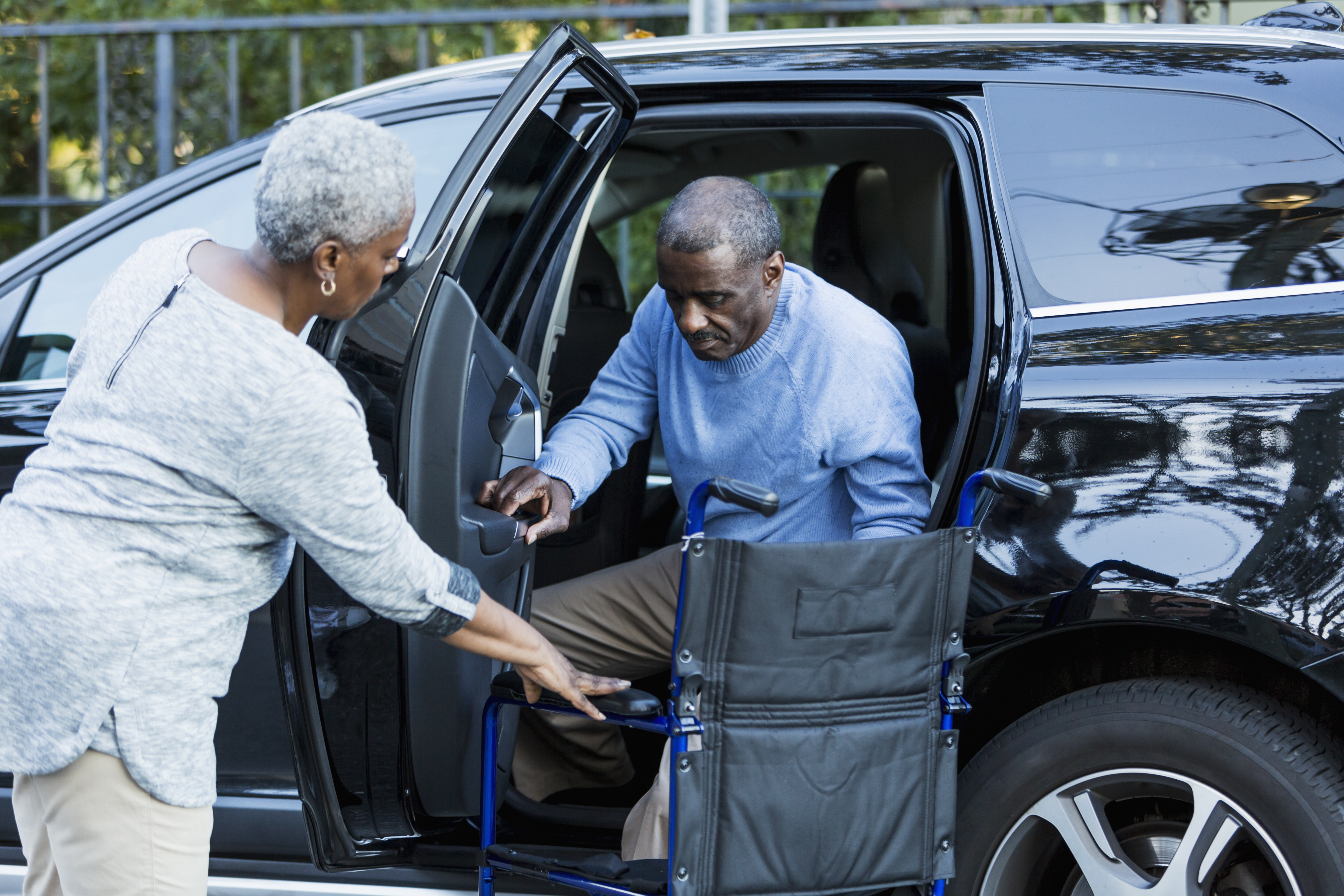AARP Hearing Center

Safe and reliable transportation that meets the needs of people of all ages and abilities is a critical element of livable communities. According to the AARP 2018 Home and Community Preference Survey, nearly 80% of people over 50 say they want to remain in their own home and community as they age. The survey shows that while most adults drive to get around their community, the ability to continue driving in later years could decline putting one’s health and wellbeing at risk. Having alternative modes of transportation is key to ensuring that all residents can continue to have access to the community supports and services they need.
AARP Oregon has been working around the state to expand transportation options, safe streets, and walkable neigborhoods for many years. In the Portland Metro region, we have been a member of the Getting There Together Coalition since 2017 working together with other organizations to advance a vision of a livable and age-friendly community grounded in a regional transportation system that prioritizes expanding mobility options, ensuring accessibility and safety on our streets for all users, and advocating for policy solutions that prevent displacement and enable people to live and age in place.

Earlier this year, AARP Volunteer State President Elaine Friesen Strang was appointed to the Metro Transportation 2020 Taskforce. Elaine has served as AARP Oregon’s Volunteer State President since June 2016. Elaine’s professional career was in social services, the last 20 years of which she was a state director for a guardianship program serving adults with intellectual/developmental disabilities. Since retiring, she has become an advocate for Livable Communities and the needs of older adults. She currently serves on the Governor’s Commission on Senior Services, and other City of Portland and Multnoman County committees ranging from transportation to emergency planning. She and her husband live in NE Portland and have two adult children. We recently caught up with Elaine to hear about the taskforce and her vision for transportation and mobility in our region.

You are currently serving on a Metro Transportation Taskforce. Tell us about this task force and its purpose.
I think everyone in the Portland area could agree on three things: we are dealing with increased congestion, our cost of living has skyrocketed, and we can no longer wait to take critical steps to combat climate change. Metro, our regional government that serves three counties and 25 cities, knows we need to act now to create a transportation system that deals with these issues in an equitable and systematic manner. In February 2019, the Metro President and Council appointed a 35 member 2020 Transportation Funding Task Force to advise the Council in the development of a possible regional transportation measure, considering the transportation needs of our region in identifying and prioritizing corridors, projects, and programs for investment to move our region forward. The Task Force is made up of transportation, community, and business leaders, representing a range of perspectives and experiences. As the Volunteer State President for AARP Oregon, I was honored to be ask to serve on this Task Force.
You are a busy person with many family and community commitments. Why did you agree to serve on the T2020 task force? It is not a small commitment.
No, it’s not. We started meeting twice each month in March and will finish in early 2020. It goes beyond the commitment of participating in meetings however, since the scope of work is extensive and I am not a transportation policy wonk by trade. AARP Oregon needs to be part of this discussion because it effects our members and all Oregonians age 50+ and their families. When AARP traveled the state in 2018 to conduct our Age Friendly Listening Tour, we found that transportation ranks a close second to housing as the issue that concerns older Oregonians the most.
Research shows the average man outlives his driving years by 7 years, the average woman by 11. What this means is that we need options beyond the car in our transportation network - multimodal system that connects us to places we need to go by our mode of use, including transit. It has protected bike lanes and pedestrian infrastructure that makes walking not only safe, but enjoyable.

For some, riding the bus or light rail isn’t the solution. In his last years, I helped my father get where he needed to go. I loaded his wheelchair in my car and I literally opened doors for him. Later, when I became a volunteer driver for Ride Connection, I was reminded of the helping hand some of us will need as we grow older, or when illness and disability occur. Our Regional Transportation Plan emphasizes safety, reliability, and affordability—all of which are crucial, but I would add accessibility needs to be part of our system. If we truly believe we want to be an Age Friendly city, community, or state, we need to include Age Friendly priorities in our transportation planning. I am that voice at the table.
What is the task force doing currently and what is next?
After establishing a set of shared values, the considered the top 75 transportation corridors in the three county are. Then we had the difficult task of narrowing them down to three tiers of importance, debating a top ten that will receive priority spending and improvement. We recently began discussing region wide programs and initiatives we feel need additional funding and would be progressive investments for citizens now and in the future. Along with our Task Force, Local Investment Teams have been formed in each county to thoroughly review potential projects for each corridor. Bandana Shrestha, AARP Oregon’s Community Engagement Director, has been appointed to the LIT for Clackamas County.
What should AARP members and other residents know and do about T2020?
There will be opportunity for community engagement in coming months. Meeting minutes, regional planning documents, and additional items can be found on the Metro online. The goal is that there will be a recommendation from the Task Force urging voters to support a funding measure and plan that will make our transportation system ready for the next decade. It is then up to voters to make an informed decision to support or reject this proposal. I urge members to stay engaged, read up and share your opinions with your Metro Councilors, City, and County officials. We also invite you to write to us.
A final thought: The EPA states transportation pollution accounts for the largest contribution of greenhouse gas emissions. More soberly, the UN reports we have 11 years left to prevent irreversible damage from climate change. As I hold my precious 8 month granddaughter I reflect on what kind of future—what type of world, environment, and society we will leave her. Here’s what’s interesting: thoughtful transportation planning and funding can do two things at once. It can protect our planet and make our streets more user friendly for everyone, which will benefit generations to come.































































